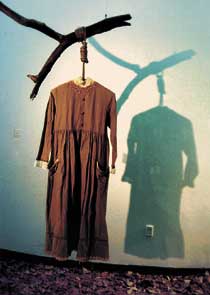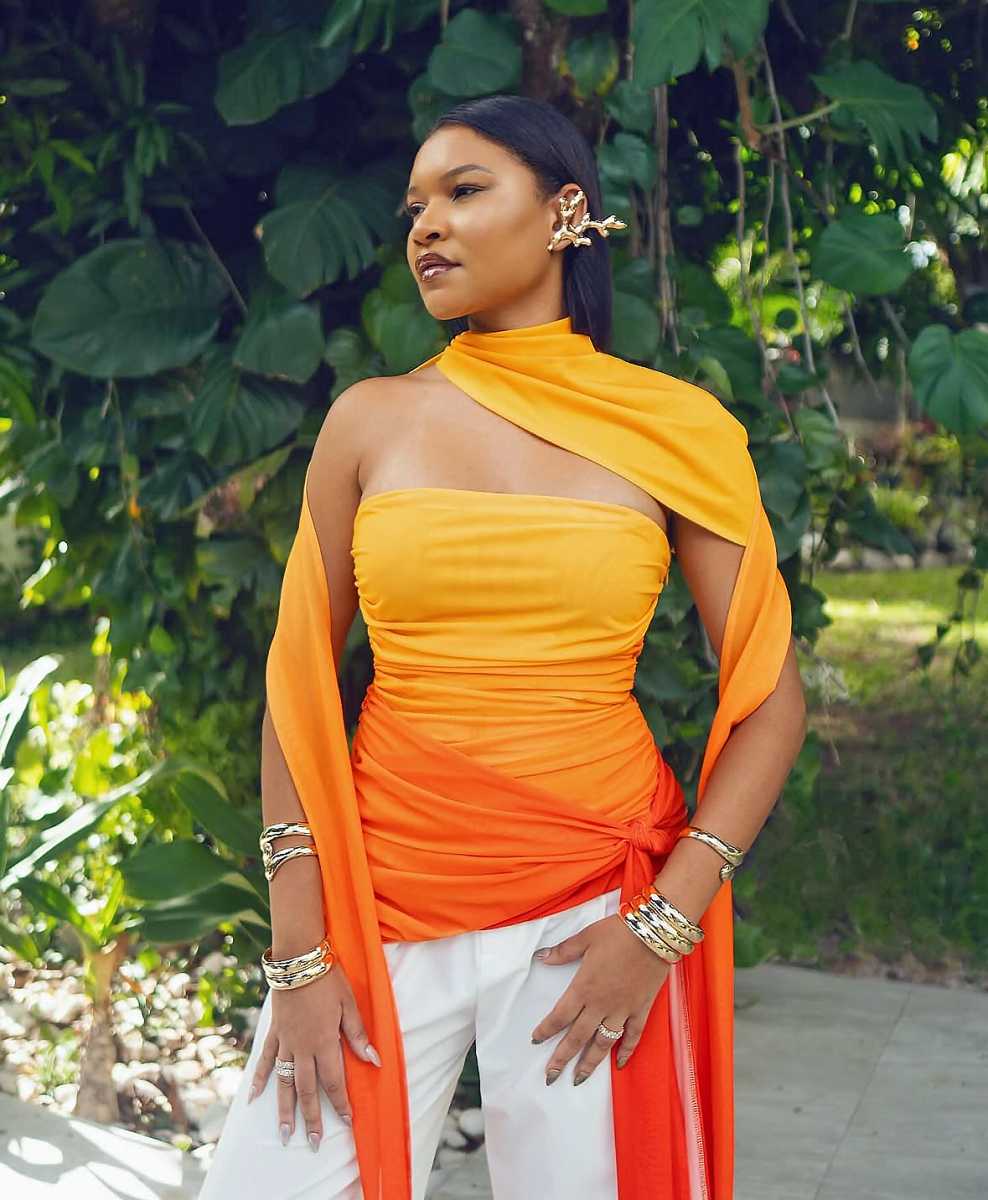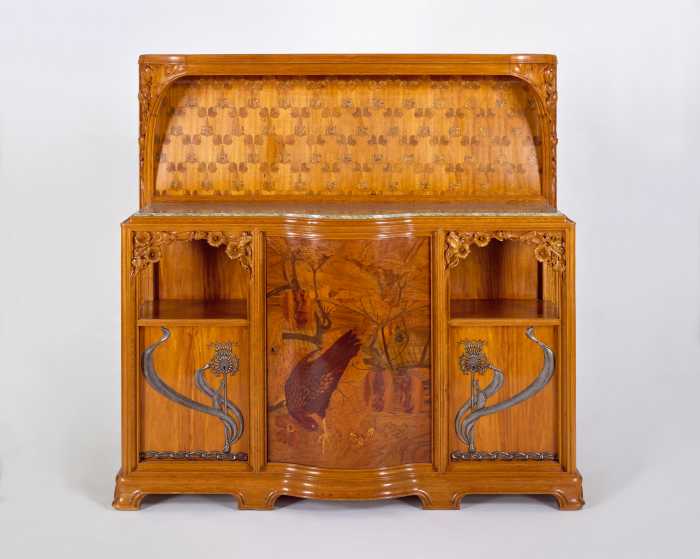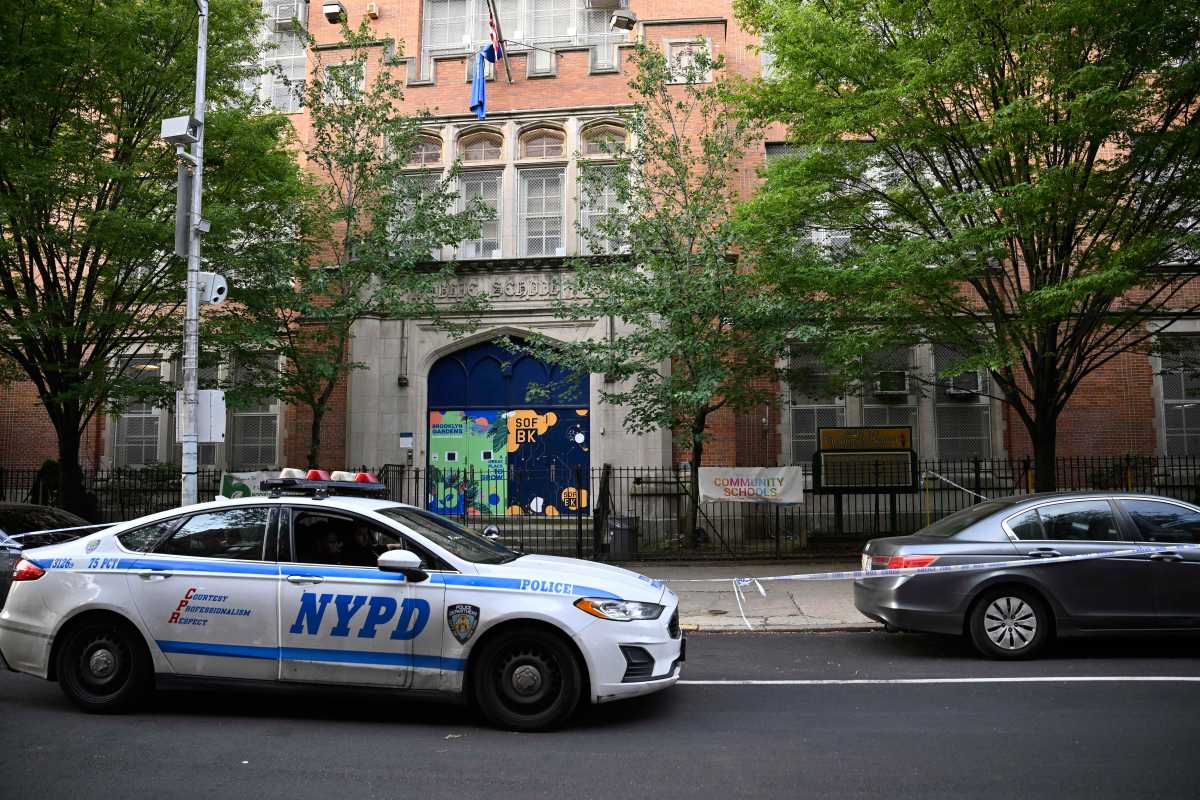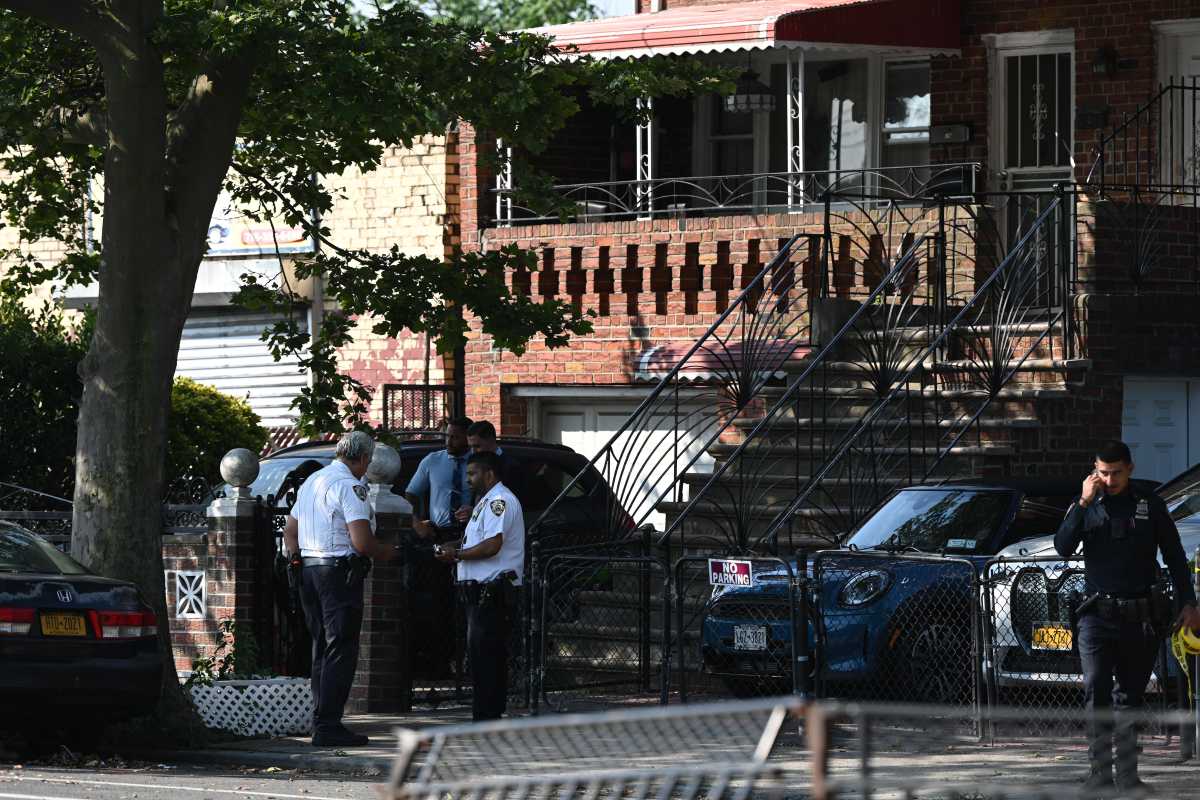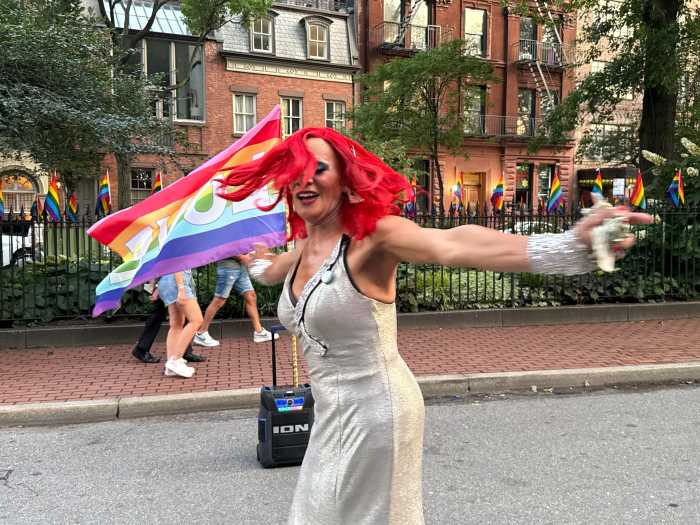Kim Mayhorn’s shattering installation "A
Woman Was Lynched the Other Day" has finally come to Brooklyn.
"A Woman Was Lynched" was created
by the Fort Greene-based artist in response to harrowing stories
of black women and girls who were lynched and raped on American
soil in the 19th and 20th centuries.
The exhibit is on display now at Long Island
University’s curving, light-filled Salena Gallery, after stops
in Savannah, Ga., Denver, Colo., and the HEREart Gallery in SoHo.
The exhibit is open through March 31 and will next travel to
Texas.
Mayhorn was featured in Essence magazine
in May 2000, among lawyers and politicians, as one of "30
Women to Watch." The editors cited this exhibition as one
of her notable achievements.
To lynch is to execute without due process
of law, especially to hang, as by a mob.
While the installation recalls many lynchings
– events that are only lightly touched upon in American history
books, if they’re mentioned at all – the exhibit’s opening statement
makes it clear that these violent hate crimes are not just uncomfortable
moments from the distant past.
The most recent lynching that Mayhorn discovered
through her research was less than three years ago. The victim
was Njeri Muthekeki, a 20-year-old woman in Muscle Shoals, Ala.
On Aug. 12, 1998, "her body was found in a tree on a slope
near an abandoned railroad track," writes Mayborn.
In the exhibit, Mayhorn uses a mixture
of leaves, branches, rope, garments and text to create lonely
tributes, remembrances of Muthekeki’s ancestors.
"The core of the piece is mainly about
getting the information out that black women were not excluded
from lynchings," Mayhorn, 31, told GO Brooklyn in a phone
interview Friday. "In doing so, I didn’t want to deal with
images per se, but let other elements – texture, garments, and
nature interplay to create an experience."
The visitors are drawn into the exhibit
via the artist’s wending path through deliberately placed piles
of fallen brown leaves collected from the neighborhood. At various
intervals, mixed media sculptures hang from the ceiling.
A late-19th-century dress, a noose and
branch and a few sentences are all the media used by Mayhorn
to construct the legacy of one woman – a slave, her name forgotten
by history – who was lynched by a mob for killing her owner’s
wife. (It was later discovered the slave owner killed his own
wife, Mayhorn writes.)
Though the swinging dress is shapeless
and missing a face, it’s a gripping visual. After passing two
of these empty dresses, and another branch with a noose small
enough for the neck of a 13-year-old girl who was suspected of
poisoning a white baby, the grim message of the small installation
is clear. This is not a walk through a faux park; this is a walk
through America’s own killing fields.
And the significance of those tree stumps
dripping with red paint? The artist learned through interviews
that in some families it was tradition to cut down the tree and
paint the top red to signify an area where a family member had
been lynched. Despite this feature, the exhibit itself is not
gruesome. The organic materials and light streaming through the
gallery’s wall of windows succeed in evoking a somber, meditative
mood – not unlike what you might find in a cemetery or empty
church.
Unlike the exhibition of photos of lynched
victims seen in "Without Sanctuary: Lynching Photography
in America" at the New York Historical Society last year,
this ghostly quiet exhibit allows the viewer to not only comfortably
confront these crimes but meditate upon the possibility of healing.
"When I exhibited in Denver,"
Mayhorn said, "a group of blacks wanted me to reopen the
gallery after hours and the event turned into a healing circle
– something I would never forget.
"The work tends to take on a life
of its own. Everyone comes with their own history and their own
story," she added. "Healing work has resulted in this
work being shown in a gallery or a museum space, though it wasn’t
my intention."
Because some of the elements of the installation
have explanations dangling from them in small print, it is necessary
to walk over the leaves – creeping closer to read – bringing
the viewer intimately close to both the nooses and the stories
of these lost souls.
With this technique the artist dares the
viewer to summon the courage to cross the line from disinterested
viewer to student of history.
At times it’s frustrating that the notes
provided at each stop on Mayhorn’s lynching trail do not have
more information. On one card, the name of the victim is missing,
on another, the year of the crime. But when dealing with an aspect
of history that was rarely or in many cases sloppily documented,
Mayhorn writes, "Throughout black culture, oral history
has remained a very prominent component of keeping historical
information alive."
In fact, Mayhorn said she found out about
the 1998 lynching through a visitor to her SoHo show. The man,
a lawyer representing the Muthekeki family, told the artist that
the lynching had never even made it out of the local paper and
into the national press.
"That’s all the information I had,"
explains Mayhorn. "Any information in the piece is straight
from the books, that is [each victim’s] story." Most disturbing
about Mayhorn’s opening statement is that these lynchings, at
the time most of them took place, were considered by some to
be fun, family outings, like picnics.
From as early as the 1870s, local photographers
would take shots of the lynched victims’ remains and make postcards
out of them, which they sold. It was at "Without Sanctuary"
that the artist first saw a visual – a postcard – of a lynched
woman. The barefoot corpse of Laura Nelson was found on May 25,
1911 in Okemah, Okla., dangling off a bridge a few feet away
from the hanged corpse of her 14-year-old son, L.W. Nelson. (The
local Oklahoma papers reported that hundreds of visitors came
to view the ghastly spectacle.)
To masterfully drive home her message,
Mayhorn’s last hanging is fashioned with a branch swathed with
dried Savannah moss. A small square of mirror hangs from the
branch at eye level. The victim this time – seen in the reflection
– is you, the viewer.
At the door, the visitor is invited to
snip off a piece of rope "to cut your own desired length"
in remembrance of "the souls of black women that perished."
"A Woman Was Lynched the Other
Day" is on display through March 31 at the Salena Gallery
[Long Island University, Flatbush Avenue Extension at DeKalb
Avenue, (718) 488-1198]. The gallery is open Monday-Friday, 9
am to 6 pm; Saturday-Sunday, 11 am to 5 pm. The exhibit is free
and open to the public.
On April 11 at 5 pm, the Salena Gallery hosts a reception for
the next exhibit, of two and three-dimensional works by Stephen
Soreff.


